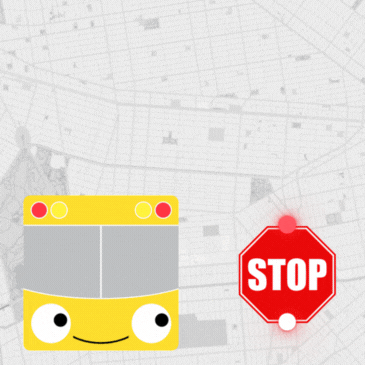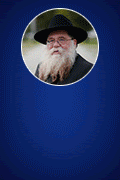1. In this week's Torah portion the Torah tells us about how Korach incited the people against Moshe Rabbeinu (Moses our teacher) and his brother Aharon the Kohen Gadol (High priest). This comes after last week's story of the Meraglim (spies) who had their own agenda and reported to the Jewish assembly that the Land of Canaan was not for them.
The basic thrust of Korach's argument was that if every single Jew is a part of one “Holy Nation” (as Hashem calls us) why is there only one Kohen Gadol? Korach said “Why do you exalt yourselves over the congregation of Hashem?” (see Chapter 16, Verse 3).
The Weekly Sedra – Parshas Korach
The Rebbe says:
1. In this week’s Torah portion the Torah tells us about how Korach incited the people against Moshe Rabbeinu (Moses our teacher) and his brother Aharon the Kohen Gadol (High priest). This comes after last week’s story of the Meraglim (spies) who had their own agenda and reported to the Jewish assembly that the Land of Canaan was not for them.
The basic thrust of Korach’s argument was that if every single Jew is a part of one “Holy Nation” (as Hashem calls us) why is there only one Kohen Gadol? Korach said “Why do you exalt yourselves over the congregation of Hashem?” (see Chapter 16, Verse 3).
What finally pushed Korach to fight publicly with the leader of the generation- Moshe Rabbeinu- is that Moshe appointed his cousin Elizapahan to be the Prince of the tribe of Levi and not Korach. Let’s look at the lineage so that we can understand this: Levi was one of the 12 tribes (one of the 12 sons of Jacob our father). Levi had 3 sons and the holiest one was name Kehos. Kehos had 4 children named 1) Amram 2) Izhar 3) Hebron 4) Uzziel. Now Moshe Rabbeinu and Aharon Hakohen were sons of Amram who was the oldest son of Kehos and Korach was the son of Izhar who was the second son of Kehos. Therefore when Amram’s two sons (Moshe and Aharon) assumed greatness, Korach was able to stomach it because they were from the eldest son of Kehos. However when Moshe Rabbeinu appointed Elizaphan to be the prince of the tribe of Levi, Korach could not handle this because Elizaphan was the son of the youngest son of Kehos- Uzziel.
2. The Rebbe asks a question:
Question: If Korach’s actual attack was on Aharon Hakohen for being the (only) Kohen Gadol, he should have launched his attack right when Aharon was appointed to his position. However we see that he waited for a year and 5 months (approximately) after Aharon was appointed to be the Kohen Gadol to launch his attack! Why did Korach wait so long?
(And even if we would try to answer that Korach’s real issue was specifically about Moshe appointing Elizaphan as the prince of the tribe of Levi, this would not suffice because Elizaphan was appointed 4 months before Korach voiced his issues).
Now since Korach waited so long and only immediately after the story of the Meraglim did he voice his uneasiness, we must say that these two stories (the Meraglim and Korach) are connected. How?
3. The Rebbe now reminds us what the issue of the Meraglim was and this will lead us to our answer:
As we said in last week’s D’var Torah on Parshas Shelach, the issue of the Meraglim was that they didn’t want to get involved with the mundane labor needed to survive in this world. They wanted to stay in the desert where all their physical needs were taken care of by Hashem and they could sit and learn Torah all day and Pray. But Moshe Rabbeinu told them that Hashem’s intention for this world is that it be made into a dwelling place for Him, and in order to do this one must work within the physical norm and bring G-dliness into it. In other words, the act is the most important thing. (If for example someone were to sit and think about all the great and holy inner meanings of Tefillin but would not actually put on the Tefellin, he would not have fulfilled the commandment of Tefillin. On the other hand if a Jew who knows absolutely nothing about the Mitzvah of Tefillin and does not know what to think about while he puts them on however he actually puts the Tefillin on, he has indeed fulfilled the commandment to put on Tefillin).
And specifically now that Moshe Rabbeinu let it be known that Hashem’s inner will is our actions with physical things Korach took issue with Moshe being the King over the whole Jewish nation and Aharon Hakohen being the only High Priest:
Korach knew that with regards to learning and understanding Torah, and with regards to spiritual status, Moshe and Aharaon were way above the level of the Jewish people. However physical action is equal by very single Jew (the greatest scholar and the simplest Jew both do the same action while putting on Tefillin and in that respect they are both equal) and therefore there is no difference between Moshe Rabbeinu, Aharon Hakohen and every other Jew. And this brought Korach to say “Why do you exalt yourselves over the congregation of Israel? You Moshe Rabbeinu just taught the Jewish people that action is the main focus and in this we are all equal!”.
4. The Rebbe now explains what Moshe Rabbeinu answered to Korach:
The goal of doing Mitzvos (commandments) is to bring more light into the world. Not only should the world have a hidden presence of Hashem, Hashem should also be able to dwell in this world and be seen by all its inhabitants.
Now it is possible that a Jew fulfills a Mitzvah but doesn’t bring light into the world. For example if a person does the Mitzvah or learns Torah for himself, to add in his person, (or even to trick people), he is not lighting up the world. This is like we learnt with regards to a Sotah (a woman who hides herself with a certain man that her husband told her not to be with) that the spiritual meaning of someone hiding himself from Hashem is when he is haughty and “full of himself” because Hashem says “Me and him cannot be in the same place together”.
So Moshe Rabbeinu answered to Korach: There is a need for the correct intentions while doing a Mitzvah with physicality and it is to ensure that you are lighting up the world and not adding darkness. And in this aspect Moshe Rabbeinu and Aharon Hakohen were at a level no other Jew was at and therefore they were at the head of the community of Israel.
5. The Rebbe tells us the lessons we can learn:
Firstly we can learn (as we have said many times) that Hashem’s desire to create this world was that the Jewish people make the physicality itself into a receptacle for Hashem’s full presence.
Secondly we can learn that in order for us to be able to learn Torah and fulfill Mitzvos which light up the world (and G-d forbid do not add darkness into the world) we must connect ourselves to the leader of our generation.
Translated by Rabbi Shalom Goldberg. Taken from Likutei Sichos Volume 4.












Anonymous
from where do we learn the second lesson? Please reply so I can share this at my Shabbos Table.
Thank You
Mazal Tov!
RABBI Shalom Goldberg –
Mazal Tov on your Smicha!
menachem
In the sicha, the Rebbe points out that Korach argued that everyone is equal, yet he wanted to be the Kohen Gadol.
The Rebbe explains that Korach didn’t like the idea of Moshe being like a king over the Jews [a King rules over every aspect of his subject’s lives, so much so that motioning to someone else in front of the king is considered a treasonous offense, worthy of death]. Moshe was the leader not just in spiritual aspects, but in the physical aspects of the Jews as well (which is why they came to Moshe complaining about a lack of meat – a physical thing).
The Rebbe explains that all the Chayos the Jews have comes from Moshe (and his extension in every generation – the Nassi Hador). It is that chayos that gives us the ability to light up the world with our Torah and Mitzvos
Shalom goldberg
“Menachem” thank you for answering the question. I just looked at this post! Sorry…